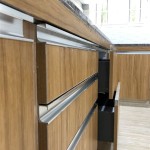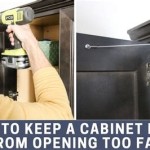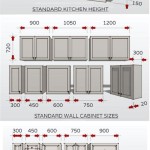Average Cost of Kitchen Cabinet Removal: A Comprehensive Overview
Kitchen cabinet removal is a common step in renovation projects, whether upgrading to a more modern design, reconfiguring the kitchen layout, or simply replacing worn-out cabinetry. Understanding the average costs associated with this process is crucial for budgeting and planning. While the final price can fluctuate depending on numerous factors, comprehending the underlying cost components allows homeowners to make informed decisions.
This article offers a detailed exploration of kitchen cabinet removal costs, including the factors that influence pricing, different removal scenarios, and potential additional expenses. The aim is to provide a clear understanding of the financial aspects involved in professionally removing kitchen cabinets, assisting individuals in preparing financially for their renovation endeavors.
Factors Influencing Kitchen Cabinet Removal Costs
Several key variables determine the cost of removing kitchen cabinets. These factors encompass the size of the kitchen, the complexity of the removal process, the disposal method, and regional labor rates. Careful consideration of these elements is essential for obtaining an accurate cost estimate.
Size of the Kitchen: The dimensions of the kitchen directly impact the time and effort required for cabinet removal. Larger kitchens inherently have more cabinets, demanding more labor and potentially increasing disposal fees. Smaller kitchens, conversely, will usually involve lower removal costs due to the reduced scale of the project.
Complexity of Removal: The ease with which cabinets can be removed significantly affects the overall cost. Factors contributing to complexity include: the age of the cabinets (older cabinets may be more difficult to detach), the method of installation (custom-built cabinets often require more intricate removal techniques), and the presence of obstacles such as plumbing or electrical wiring that need to be carefully navigated. Cabinets that are tightly integrated into the kitchen's infrastructure will typically command a higher removal fee.
Disposal Method: The chosen method for disposing of the removed cabinets plays a role in the overall cost. Options range from simply placing the cabinets curbside for municipal waste collection to donating them to a charitable organization or transporting them to a landfill. Curbside disposal may incur minimal or no cost (depending on local regulations), while landfill disposal will involve fees for waste management. Donating cabinets can be a cost-effective option, but may necessitate transporting them to the donation center. Furthermore, some removal companies include disposal services in their quote, which can simplify the process but also influence the overall price.
Regional Labor Rates: Labor rates vary considerably across different geographic locations. Metropolitan areas with higher costs of living tend to have higher labor rates for contractors and handymen. Rural areas, on the other hand, generally have lower labor rates. Obtaining quotes from multiple local contractors is crucial to ascertain the prevailing labor rates in a specific region and to ensure a competitive price.
Condition of Cabinets and Potential for Salvage: If the cabinets are in good condition and can be salvaged for reuse or donation, the removal process may be more delicate and time-consuming, potentially increasing labor costs. The contractor might need to exercise extra care to avoid damaging the cabinets during removal. However, the possibility of donating or reselling the cabinets could offset some of the removal expenses.
Average Cost Ranges for Kitchen Cabinet Removal
Providing a precise average cost for kitchen cabinet removal is challenging due to the variability of the factors mentioned above. However, general cost ranges can offer a helpful starting point for budgeting. These ranges are approximate and should be viewed as guidelines, not definitive figures. Obtaining personalized quotes from local professionals is always recommended for accurate cost estimations.
Basic Removal (Simple Detachment and Disposal): This scenario involves straightforward removal of cabinets that are easily accessible and require minimal dismantling. The average cost for basic removal can range from $300 to $800. This price range typically covers the labor involved in detaching the cabinets from the walls, transporting them to a designated disposal area, and basic cleanup of the area.
Complex Removal (Intricate Dismantling and Obstacles): This scenario entails removing cabinets that are intricately installed, require careful dismantling to avoid damage, or are situated around plumbing, electrical wiring, or other obstacles. The average cost for complex removal can range from $800 to $1500 or higher. This price range reflects the increased labor and expertise required to navigate these challenges.
Removal with Disposal Services: Many homeowners opt for removal services that include the disposal of the old cabinets. This provides a convenient solution, as the contractor handles the entire process from detachment to disposal. The cost for removal with disposal services typically ranges from $500 to $1200 or more, depending on the volume of cabinets and the disposal fees charged by the local landfill or waste management facility.
DIY Removal: The most cost-effective option is to remove the cabinets oneself. This eliminates labor costs but requires time, physical effort, and the necessary tools. While DIY removal can save money, it's crucial to consider the potential risks, such as damaging the cabinets, the walls, or oneself. Proper planning and safety precautions are essential for a successful DIY removal project. Furthermore, even with DIY removal, there will still be disposal costs to consider.
Potential Additional Costs to Consider
In addition to the core removal costs, several potential additional expenses may arise during the kitchen cabinet removal process. These costs can significantly impact the overall budget and should be factored in during the planning phase.
Damage Repair: Removing cabinets can sometimes result in damage to the surrounding walls, flooring, or plumbing. Repairing any damage incurred during the removal process will add to the overall cost. This might involve patching drywall, repairing flooring, or addressing minor plumbing leaks. It's prudent to set aside a contingency fund to cover potential damage repairs.
Plumbing and Electrical Disconnection/Reconnection: If the cabinets are connected to plumbing or electrical systems, such as sinks, dishwashers, or lighting fixtures, disconnecting and reconnecting these systems will incur additional costs. Hiring a licensed plumber or electrician is generally recommended for these tasks to ensure safety and compliance with local codes. The cost for plumbing and electrical work can vary depending on the complexity of the work required.
Appliance Removal: Removing appliances such as refrigerators, ovens, or dishwashers can add to the overall cost, especially if these appliances are integrated into the cabinetry. Disconnecting and moving appliances requires specialized equipment and expertise, and may necessitate hiring a professional appliance mover. The cost for appliance removal depends on the size and weight of the appliances, as well as the distance they need to be moved.
Permits: In some jurisdictions, a permit may be required for kitchen renovations, including cabinet removal. Obtaining the necessary permits can involve application fees and inspections, contributing to the overall project cost. It is advisable to check with the local building department to determine whether a permit is required for the cabinet removal project.
Hazardous Material Removal: Older homes may contain hazardous materials such as asbestos or lead paint. If these materials are present in the cabinets or surrounding areas, their removal will require specialized handling and disposal procedures, incurring additional costs. Testing for hazardous materials is recommended before starting the demolition process, especially in older homes.
Unexpected Problems: Kitchen renovations can sometimes uncover hidden problems, such as mold, rot, or structural issues. Addressing these unexpected problems can add to the overall project cost. It is advisable to have a professional inspection conducted before starting the renovation to identify any potential issues and plan accordingly.
In conclusion, understanding the various factors that influence kitchen cabinet removal costs, the average cost ranges, and potential additional expenses is essential for effective budgeting and planning. Obtaining multiple quotes from local professionals, carefully assessing the complexity of the removal process, and considering potential unforeseen expenses will help homeowners prepare financially for their kitchen renovation projects.

Average Cost To Replace Cabinets Forbes Home

Average Cost To Reface Cabinets By Li Foot Material And Type Forbes Home

How Much Does A Kitchen Remodel Cost Forbes Home

How Much Does A Kitchen Remodel Cost 2024 Average

2024 Cost To Remove Kitchen Cabinets Homeguide

Kitchen Remodeling Cost Guide 2024 Sweeten Com

Kitchen Remodel Costs Small Homeserve Usa

The Cost Of A Kitchen Remodel Understanding Your Budget

What Do Kitchen Cabinets Cost Tips To Stay In Budget

How Much Does A Kitchen Remodel Cost 2024 Data Angi
Related Posts








